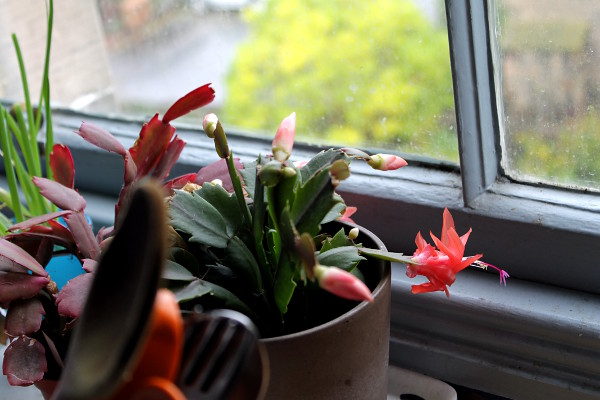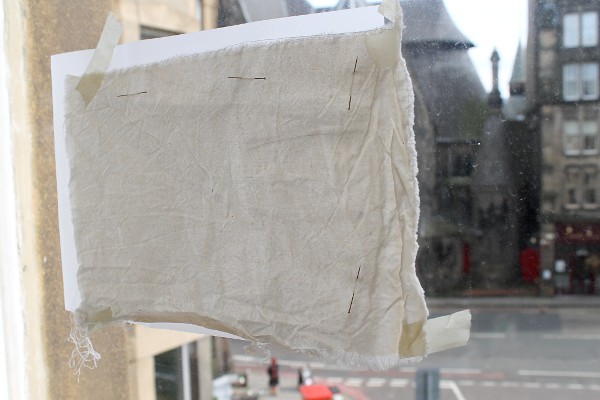Ever since I cleared out my art supply collection before we moved, I’ve been thinking about what sorts of supplies really fit my needs.
My default colouring mechanism is watercolour, usually straight from the tube, which is great on paper, if a little slow-drying for the amount of time I usually have to work on things.
I tried watercolours on fabric, but all my successes were tempered by some pretty frustrating failures when the colours bled.
I was searching for a more portable watercolour solution that would let me work on paper in shorter bursts and came across Derwent Inktense Pencils and Blocks. The idea is that you can put them on paper dry and then use a water wash to blend for a permanent colour. They’re great for layering with watercolours, because you can put in a background or base colour and if you work over it with other water-soluble colours, it won’t wash out.

I thought I’d try out some of the blocks for big backgrounds and colour washes in Little Lion’s baby book and really enjoyed using them. Recently, I invested in the pencils, for more detailed work, but I must admit that I haven’t even taken them out of their box yet!

I have an embroidery which is languishing while I work out if I can use Inktense bars or pencils on fabric, so I’ve been fiddling about with different ways of making them colourfast.


I’m not entirely happy with the bleeding I get after washing, but I wonder if:

a. The bars lay down more pigment than the fabric can hold, which is causing the excess colour to wash away, or

b. I diluted the medium too much so it can’t do its job. (It was a very unscientific process, I’m ashamed to admit.)

My next steps are probably to try the medium with the pencils, which is how I’m most likely to use them on fabric.

I’ll keep you updated!
(If you’d like to profit from more of my colourfast disasters experiments, why not check out my tutorial on how to tell if your thread is colourfast?)




















